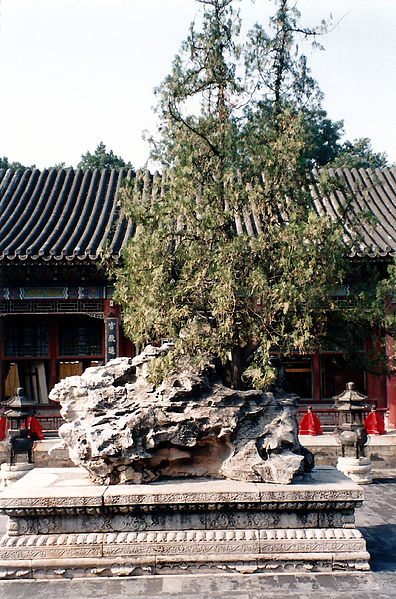
Garden Rock
Summer Palace, Beijing
Large and interesting-looking rocks like this one were considered so rare and valuable that, during Song times, the imperial court nearly bankrupted the whole country in collecting them. They originate from Lake Tai in Jiangsu, near Suzhou, and their unique form is said to originate from "the action of water grinding small hard pebbles into the larger, softer stone" (Keswick, p.66). When massive, as here, they are called "garden rocks;" the smaller hand-sized varieties, collected by literati and displayed in their studios, are called "scholars' rocks." Innumerable Chinese paintings, from Song onward, will include images of rocks like these as part of their compositions.
Garden rocks could be used in stand-alone displays, as here. They were also assembled together, in much larger configurations, as the "backbone" landscaping element of a Chinese garden, where they represented the fanciful mountains of the immortals, and other real or imagined mountain scenery.


